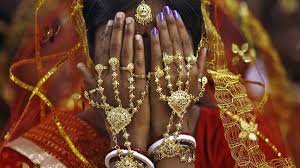Child marriage is one serious problem that still exists in India and affects the lives of millions of children every year. Some of the most shocking child marriage practices include Dhridhacha, practiced in Shivpuri, Madhya Pradesh. This highly objectionable practice involves families practically selling their daughters as brides-a highly questionable ethics issue as far as consent and women’s rights are concerned.
Dhridhacha: Know the Practice in Depth The Mechanics of Dhridhacha.
In this practice, families negotiate contracts to “sell” their daughters to prospective husbands. When a man selects a woman he likes, he may be expected to pay around ₹1,000,000. This transaction resembles a day at a vegetable market, where choice and price govern the process.
The Role of Consent
What’s more, the agency accorded to women in these forms of agreements is often very much limited; mostly, decisions regarding marriage are not presented for them to decide on. It is this deficiency in freedom that puts at question the existence of free consent on the part of the marrying couple.
Financial Transactions
The amounts are huge, and families may be compelled to agree to such transactions due to financial pressures. More often than not, such transactions link a woman’s worth with her monetary value, reinforcing harmful stereotypes.
The Social and Cultural Context of Dhridhacha
Historical Roots
Dhridhacha thus has strong historical roots from tradition and cultural norms; it eventually developed into a system where monetary dealings become personal relationships.
Influence of Poverty and Patriarchy
It is greatly motivated by poverty and patriarchy. A lot of families living in conditions of economic stress view marriage as a method of ending their financial crises. Women’s rights are compromised to meet these economic needs, thus placing them in the cycle of violation.
Stigma and Community Acceptance
Within the community, Dhridhacha is generally accepted. Outsiders might call it out for what it really is, but for a lot of local people, it is justified and some sort of normalcy. This social acceptance of such a practice complicates any efforts to challenge it.
Also Read This :: SBI PO Recruitment Notification – December 2024
Legal Ramifications and Governmental Intervention
Violation of Other Existing Laws
Dhridhacha flagrantly flouts Indian laws banning child marriage and traffic in humans. While there are legal frameworks, enforcement is very weak, which is how these practices continue.
Government Efforts in Combating Dhridhacha
Various government initiatives gone to fight the problem. But the effectiveness of those measures remains pretty low because of societal resistance and lack of awareness.
Challenges in Enforcement
Many challenges face law enforcement. Social norms may make reporting such practices unviable, and economic need may force families to continue with them.
The Impact on Women and Families
Psychological and Emotional Toll
Women experiencing Dhridhacha suffer a lot from psychological stress. Hopelessness and helplessness eventually give way to mental disorders.
Health Risks and Implications
Health risks are associated with this practice, and many women face reproductive health problems related to early marriage, further lowering their status.
Intergenerational Effect Families involved in Dhridhacha can perpetuate cycles of poverty and limited opportunities. The consequences extend not just to individuals but to entire communities.
Combat with Dhridhacha: multi-faceted approach.
Education Initiatives
Education will lead to the empowerment of women, which in turn creates awareness about their rights and other useable alternatives to such heinous practices as Dhridhacha.
Economic Empowerment Programs
The generation of economic opportunities can change this point of view. As soon as the women can support themselves, options increase and practices like Dhridhacha lose their appeal.
Community-Based Interventions
Community involvement is very essential. Awareness campaigns can be used to change perceptions and persuade people to move away from outdated traditions.
Conclusion
Dhridhacha stands as that jolting crossroad of tradition, poverty, and gender inequality. The custom is in dire need of attention. The need of the hour calls for increased awareness, closer adherence to the law, and holistic solutions so that such practices are put to an end. Interventions are needed much more than ever before. We can together build a better future wherein women have choices.


